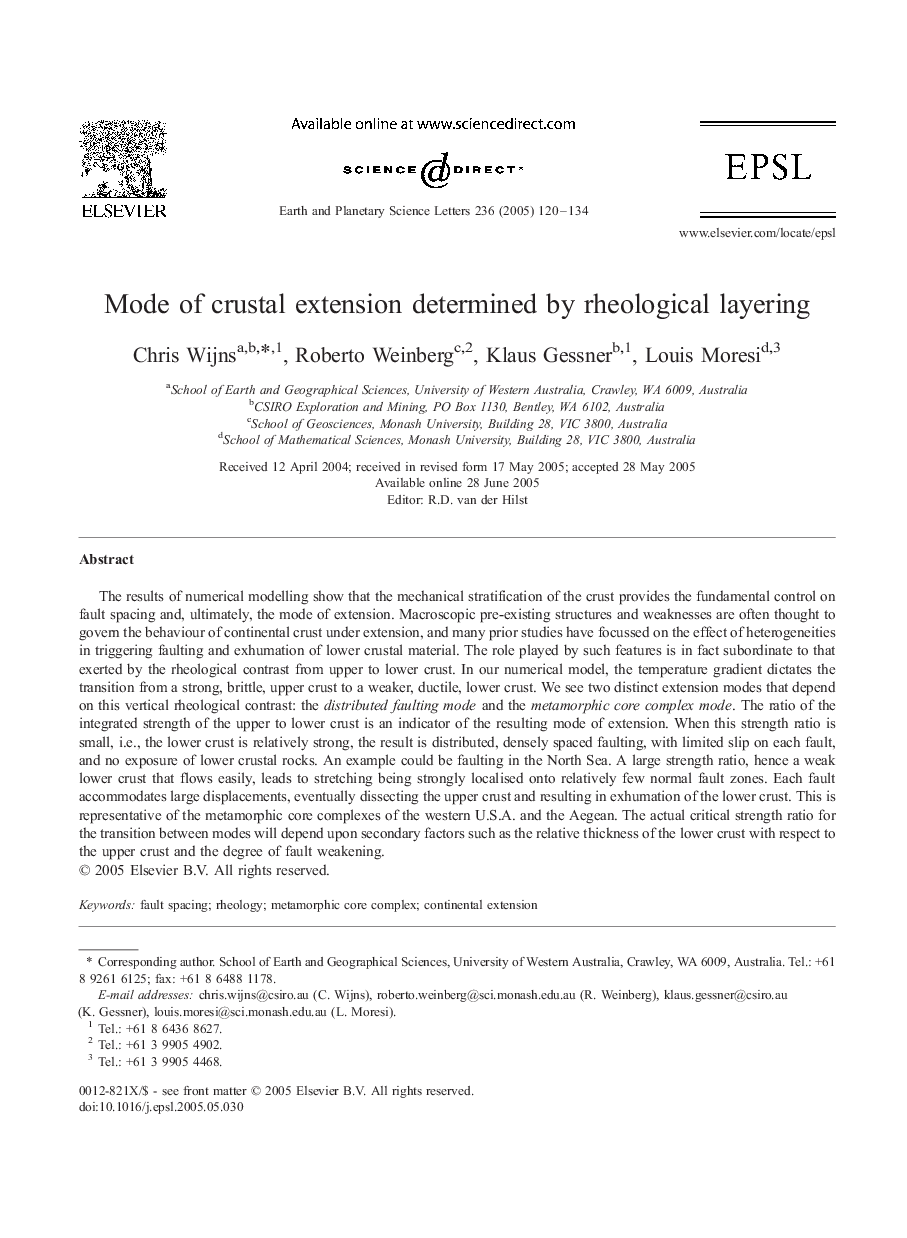| Article ID | Journal | Published Year | Pages | File Type |
|---|---|---|---|---|
| 9522135 | Earth and Planetary Science Letters | 2005 | 15 Pages |
Abstract
The results of numerical modelling show that the mechanical stratification of the crust provides the fundamental control on fault spacing and, ultimately, the mode of extension. Macroscopic pre-existing structures and weaknesses are often thought to govern the behaviour of continental crust under extension, and many prior studies have focussed on the effect of heterogeneities in triggering faulting and exhumation of lower crustal material. The role played by such features is in fact subordinate to that exerted by the rheological contrast from upper to lower crust. In our numerical model, the temperature gradient dictates the transition from a strong, brittle, upper crust to a weaker, ductile, lower crust. We see two distinct extension modes that depend on this vertical rheological contrast: the distributed faulting mode and the metamorphic core complex mode. The ratio of the integrated strength of the upper to lower crust is an indicator of the resulting mode of extension. When this strength ratio is small, i.e., the lower crust is relatively strong, the result is distributed, densely spaced faulting, with limited slip on each fault, and no exposure of lower crustal rocks. An example could be faulting in the North Sea. A large strength ratio, hence a weak lower crust that flows easily, leads to stretching being strongly localised onto relatively few normal fault zones. Each fault accommodates large displacements, eventually dissecting the upper crust and resulting in exhumation of the lower crust. This is representative of the metamorphic core complexes of the western U.S.A. and the Aegean. The actual critical strength ratio for the transition between modes will depend upon secondary factors such as the relative thickness of the lower crust with respect to the upper crust and the degree of fault weakening.
Related Topics
Physical Sciences and Engineering
Earth and Planetary Sciences
Earth and Planetary Sciences (General)
Authors
Chris Wijns, Roberto Weinberg, Klaus Gessner, Louis Moresi,
